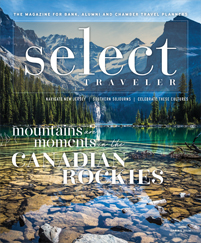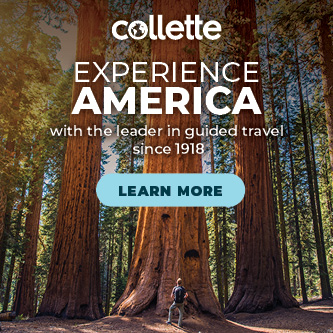Philadelphia may be America’s most historic city.
In 2015, UNESCO named Philadelphia America’s first World Heritage City. This honor is bestowed to cities that have World Heritage Sites of “outstanding universal value” as well as a plethora of other historic and cultural sites.
The jewel at the center of Philadelphia’s historic crown is Independence Hall, where both the Declaration of Independence and the Constitution were signed. Beyond that, the city features numerous world-class museums and over 60 National Historic Landmarks.
Groups can see why this modern city earned such accolades by exploring its standout historic landmarks, attractions and museums, each of which help tells the story of the birth of a nation.
Independence National Historical Park
In July 1776, 56 men risked their lives to defy the king of England. The building where these men courageously signed the Declaration of Independence still stands, with exhibits detailing how the site helped form America.
Guided tours of Independence Hall reveal the story of the site during the signing of the Declaration of Independence and the signing of the U.S. Constitution at the same spot 11 years later. Groups can feel transported back in time by viewing George Washington’s “rising sun” chair, the original inkstand used to sign the Declaration of Independence and the original draft of the Constitution. Now a UNESCO World Heritage Site, Independence Hall is part of the larger Independence National Historical Park.
Another one of the park’s icons, the Liberty Bell, stands prominently in front of Independence Hall. Displays of historic documents and photographs and information surrounding the bell help explain its history as a symbol of freedom.
With more then two dozen historically significant buildings in the park, fitting them all into one trip can prove difficult. Groups can tour on their own or with a guide to give the tour more focus.
“There are a lot of receptive tour operators that can provide costumed Colonial presentations for groups,” said Jim DePhilippo, tourism sales manager for the Philadelphia Convention and Visitors Bureau. “They lead walking tours around the historic district, which includes many of the sites at the park. Centipede Tours Philadelphia is one company many groups use.”
Other sites of interest for groups in the park include the President’s House, the Benjamin Franklin Museum, the Independence Visitor Center, the National Constitution Center and Christ Church.
City Tavern
Happy hour in Colonial days meant hearty fare and a dark porter after a day hashing out the details of the Declaration of Independence. George Washington, Thomas Jefferson, Benjamin Franklin and other Founding Fathers threw back drinks and dined on local fare at the original 1773 City Tavern. Today, a re-creation of City Tavern built in the 1970s stands on the site of the original and serves historically accurate Colonial fare for diners.
“They have recaptured the ambiance of the original tavern,” said DePhilippo. “The servers all wear Colonial costumes. The chef has re-created recipes that were served in the 1700s. The experience is quite popular because of the uniqueness of it.”
Groups can sample Jefferson’s favorite sweet potato biscuits, beer from Franklin’s personal recipe and other period-appropriate goodies. The proprietor, chef Walter Staib, researched the culinary history of the original tavern extensively to create the menu, which features made-from-scratch using local ingredients. Staib, who also stars in a hit television series, “A Taste of History,” earned the restaurant a Five Star Diamond Award for its traditional yet sophisticated offerings, such as a turkey pot pie in a sherry cream sauce.
The restaurant offers three floors, 10 dining rooms and a spacious garden with room for groups.
Fairmount Park
Colonial life in the 1700s moved too fast for many wealthy men and women at the time. They escaped from the dirty and loud realities of town to an area now known as Fairmount Park.
“In Colonial days, people would get out of the hubbub of the city by building mansions in Fairmount Park,” said DePhilippo. “Fairmount Park has six of these historic homes that give perspectives on life in the 18th and 19th centuries. The park is an important part of our city. Fairmont Park helps you look at the history of Philadelphia from a slightly different angle.”
Many cities eventually tore down their Colonial mansions to make room for city growth. In an effort to preserve the quality of the city’s water, Philadelphia officials purchased Fairmount Park and the mansions that stood on the 2,000-acre tract of land.
Many of the mansions, including the Strawberry Mansion, underwent significant improvements for the 1976 Bicentennial. The home offers programming such as holiday events, themed tours and author lectures. Visitors learn how William Lewis — a Quaker, lawyer and abolitionist — originally built the home that eventually entertained celebrated guests like the Marquis de Lafayette.
Another home open for group tours almost burned to the ground in 2003. Woodford Mansion houses a collection of Colonial furniture and household items. The 1756 home was the first of Philadelphia’s famed Colonial Georgian mansions and is now a National Historic Landmark.
Museum of the American Revolution
Smoke fills the room, the floor shakes, and gunshots erupt at the Battlefield Theater in the Museum of the American Revolution. The theater re-creates a soldier’s sensory experience on the front lines of the Continental Army during a British attack.
The 2017 museum goes beyond 500 artifacts on display, drawing guests into the history viscerally with 20 lifelike figures and 31 audiovisual experiences.
“A visit to our historic district would be missing out on the fuller history of the development of the country,” said DePhilippo. “The Museum of the American Revolution tells the story of the war and its broader context.”
Groups follow the journey to independence chronologically, beginning with the roots of the conflict in the 1760s through the war’s aftermath. The museum represents various perspectives from the time, with a replicated Oneida Indian council house and a volume of 1773 poems from America’s first published black female poet, Phillis Wheatley.
At one multimedia presentation, visitors can see Washington’s headquarters tent, where he contemplated historic decisions during the war. The 118,000-square-foot museum is also renowned for its collection of art, manuscripts and weapons used during the war.









